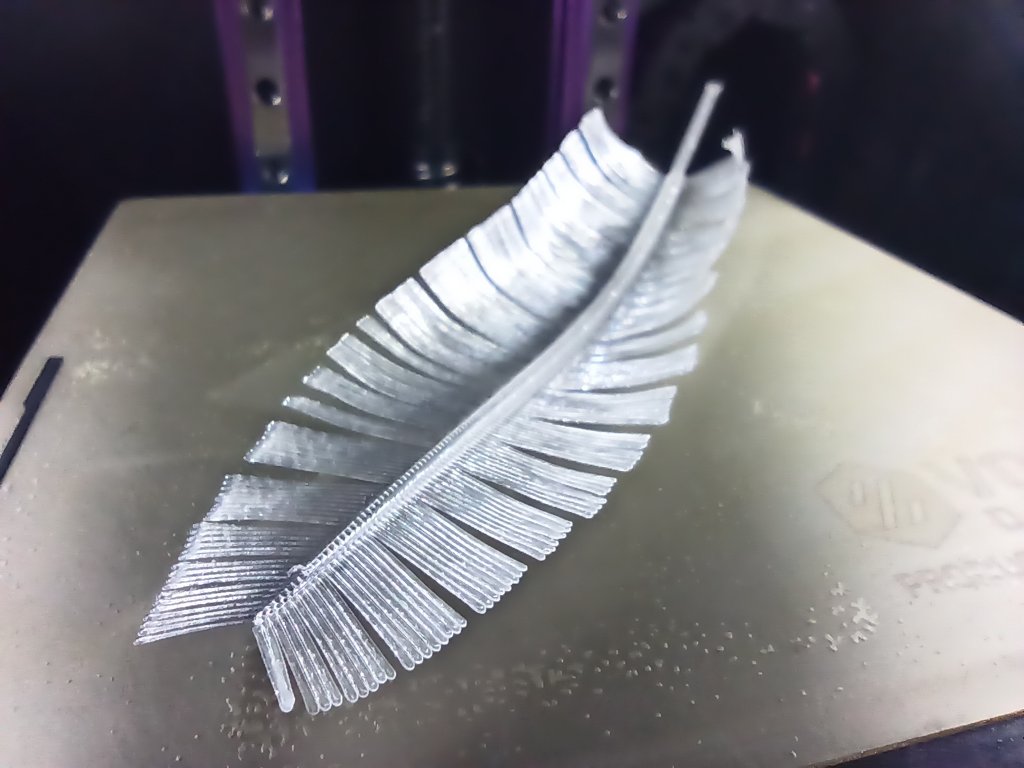Fabulous Feathers
Hannah Eikens
How can hairline 3D printing enable new design possibilities?
3D printing has revolutionized the way we design and manufacture goods. Filament-based 3D printing has been around for decades and has now become more affordable. However, while it is more accessible, the underlying technology and principles have remained the same. In the traditional 3D printing design process, a 3D model is first created in CAD software, before being imported and processed by slicing software for printing. The slicer cuts the imported object into individual slices, so the printer can build up the model, layer by layer. This two-step process limits the final design in several ways.
Fabulous Feathers demonstrates what is possible using recent, novel design solutions.

Current CAD and slicing software can hinder achieving high fidelity results from filament 3D printing. The slicer has a large impact on the final print result as it can induce tiny imperfections in the print unknown to the designer.
This project employed a single software solution called Full Control which enables full control of the 3D design printing through Python coding.
By precision printing a feather, the final design demonstrates the capabilities of this new software solution. The feather is based on a set of adaptable parameters, so it can be printed with any desired dimensions. The parametric nature of the design allows for easy tuning to suit any model of printer. Errors can easily be corrected or eliminated using this new approach.
The natural curvature of the feather was created using hot water at varying temperatures. For PET-G, we discovered an ideal water temperature of 80 Celsius to soften the plastic.
This project inspires future designs to take advantage of the technology and make designers rethink what is possible with filament-based 3D printing.
The simple use of hot water to deform the print demonstrates that achieving a natural aesthetic is possible with 3D printing, despite starting with a straight-forward geometric design.
The project demonstrates the use of cutting-edge software to extend the boundaries of making using a 3D printer and post-processing.



